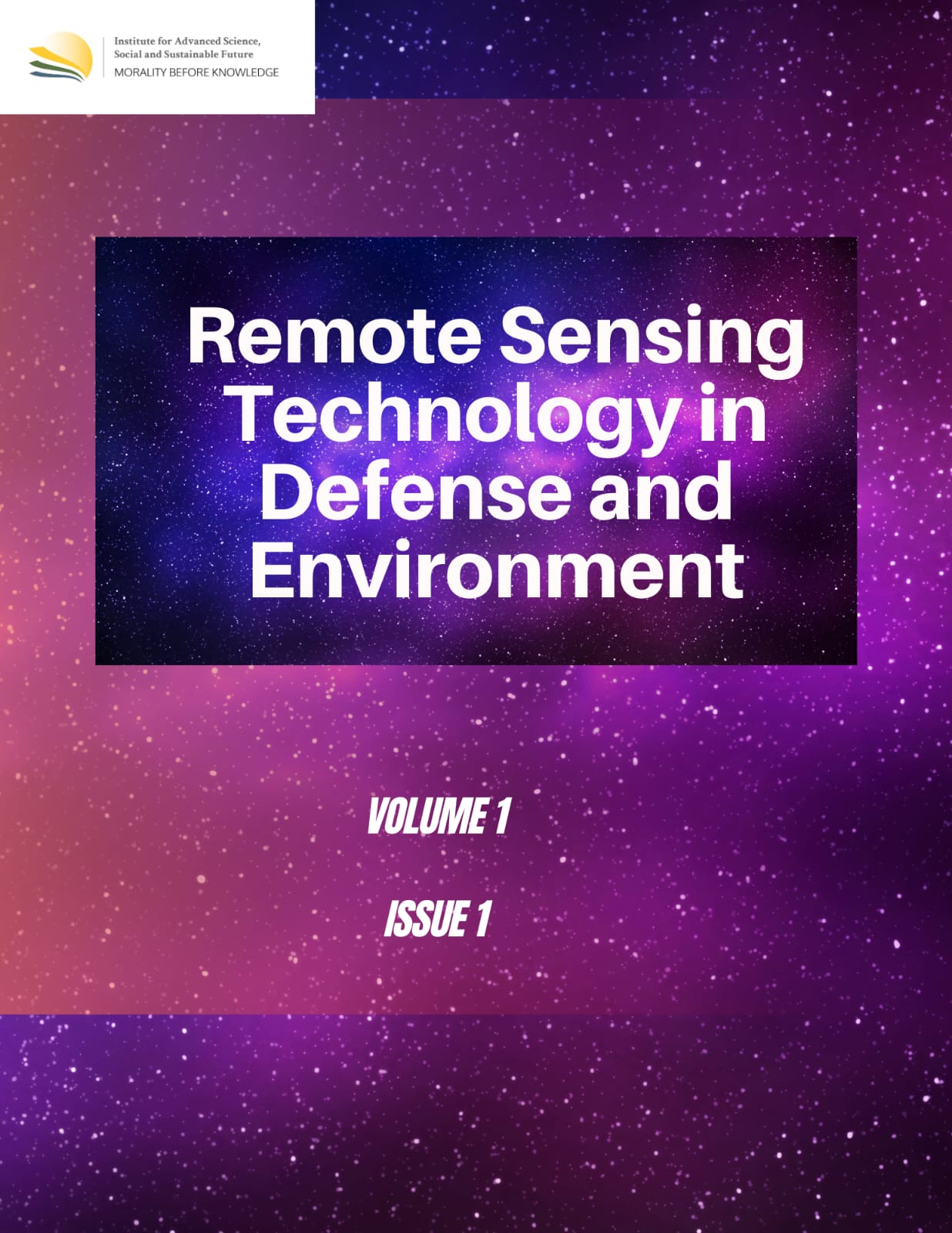The role of maritime geospatial in navigating uncharted waters mapped
DOI:
https://doi.org/10.61511/rstde.v1i1.2024.844Keywords:
geospatial, maritime geospatial, remote sensingAbstract
Background: Modern maritime navigation, especially in uncharted waters, faces major challenges that require innovative solutions. Geospatial technologies play a key role in providing effective solutions for mapping and navigation. This study aims to explore the role of geospatial technologies in improving the safety and efficiency of maritime navigation, as well as supporting sustainable management of marine resources. Methods: This study used both qualitative and quantitative approaches. Data was obtained through secondary collection from journals, books and other documents. Results: Data analysis revealed that geospatial technology plays an important role in identifying safe navigation routes, monitoring sea conditions, and sustainably managing marine resources. The integration of geospatial data from various sources enables more effective decision-making in maritime spatial planning and safe navigation. Conclusion: This research concludes that geospatial technology is a critical aspect of modern maritime navigation. With an integrated and collaborative approach, these technologies can improve navigation efficiency and safety, and support sustainable management of marine resources. Awareness and education on geospatial technology in the maritime industry is considered essential to maximize its potential in maintaining the balance of marine ecosystems and the sustainability of the maritime industry.
References
Battamo, A. Y., Varis, O., Sun, P., Yang, Y., Oba, B. T., & Zhao, L. (2021). Mapping socio-ecological resilience along the seven economic corridors of the Belt and Road Initiative. Journal of Cleaner Production, 309. https://doi.org/10.1016/j.jclepro.2021.127341
Berenter, J., Morrison, I., & Mueller, J. M. (2021). Valuing user preferences for geospatial fire monitoring in guatemala. Sustainability (Switzerland), 13(21). https://doi.org/10.3390/su132112077
David, C. G., Kohl, N., Casella, E., Rovere, A., Ballesteros, P., & Schlurmann, T. (2021). Structure-from-Motion on shallow reefs and beaches: potential and limitations of consumer-grade drones to reconstruct topography and bathymetry. Coral Reefs, 40(3), 835–851. https://doi.org/10.1007/s00338-021-02088-9
Davies, T. E., Carneiro, A. P. B., Campos, B., Hazin, C., Dunn, D. C., Gjerde, K. M., Johnson, D. E., & Dias, M. P. (2021). Tracking data and the conservation of the high seas: Opportunities and challenges. Journal of Applied Ecology, 58(12), 2703–2710. https://doi.org/10.1111/1365-2664.14032
Depellegrin, D., Hansen, H. S., Schrøder, L., Bergström, L., Romagnoni, G., Steenbeek, J., Gonçalves, M., Carneiro, G., Hammar, L., Pålsson, J., Crona, J. S., Hume, D., Kotta, J., Fetissov, M., Miloš, A., Kaitaranta, J., & Menegon, S. (2021). Current status, advancements and development needs of geospatial decision support tools for marine spatial planning in European seas. Ocean and Coastal Management, 209. https://doi.org/10.1016/j.ocecoaman.2021.105644
Lee, J. S., & Yu, Y. U. (2023). Calculation of categorical route width according to maritime traffic flow data in the Republic of Korea. Journal of Marine Engineering and Technology, 22(5), 222–232. https://doi.org/10.1080/20464177.2023.2223396
Mazza, D., Parente, L., Cifaldi, D., Meo, A., Senatore, M. R., Guadagno, F. M., & Revellino, P. (2023). Quick bathymetry mapping of a Roman archaeological site using RTK UAS-based photogrammetry. Frontiers in Earth Science, 11. https://doi.org/10.3389/feart.2023.1183982
Mohn, C., Kotta, J., Dahl, K., Göke, C., Blažauskas, N., Ruskule, A., Aps, R., Fetissov, M., Janssen, F., Lindblad, C., Piotrowksi, M., Wan, Z., Christian Mohn, A., & Piotrowski, M. (2011). Modelling for Maritime Spatial Planning: Tools, concepts, applications Project part-financed by the European Union (European Regional Development Fund) IMPRINT. www.bsh.dewww.sustainable-projects.eu
Nõmmela, K., & Kõrbe Kaare, K. (2022). Incorporated Maritime Policy Concept: Adopting ESRS Principles to Support Maritime Sector’s Sustainable Growth. Sustainability (Switzerland), 14(20). https://doi.org/10.3390/su142013593
Papageorgiou, M., Beriatos, E., Christopoulou, O., Duquenne, M. N., Kallioras, D., Sakellariou, S., Kostopoulou, T., Sfougaris, A., Mente, E., Karapanagiotidis, I., Kyvelou, S. S., Tzannatos, E., Kanellopoulou, K., & Papachatzi, A. (2020). Implementation challenges of maritime spatial planning (MSP) in Greece under a place-based approach. Euro-Mediterranean Journal for Environmental Integration, 5(2). https://doi.org/10.1007/s41207-020-00172-0
Perttola, W. (2022). Digital Navigator on the Seas of the Selden Map of China: Sequential Least-Cost Path Analysis Using Dynamic Wind Data. Journal of Archaeological Method and Theory, 29(2), 688–721. https://doi.org/10.1007/s10816-021-09534-6
Sidman, G., Fuhrig, S., & Batra, G. (2020). The use of remote sensing analysis for evaluating the impact of development projects in the yellow sea large marine ecosystem. Sustainability (Switzerland), 12(9). https://doi.org/10.3390/su12093628
Xiao, L., Chen, S., Xiong, S., Qi, P., Wang, T., Gong, Y., & Liu, N. (2022). Security risk assessment and visualization study of key nodes of sea lanes: case studies on the Tsugaru Strait and the Makassar Strait. Natural Hazards, 114(3), 2657–2681. https://doi.org/10.1007/s11069-022-05484-8
Yoshida, M., Shimizu, E., Sugomori, M., & Umeda, A. (2021). Identification of the relationship between maritime autonomous surface ships and the operator’s mental workload. Applied Sciences (Switzerland), 11(5), 1–23. https://doi.org/10.3390/app11052331
Zhang, J., Sha, J., Han, G., Liu, J., & Qian, Y. (2021). A Cooperative-Control-Based Underwater Target Escorting Mechanism with Multiple Autonomous Underwater Vehicles for Underwater Internet of Things. IEEE Internet of Things Journal, 8(6), 4403–4416. https://doi.org/10.1109/JIOT.2020.3026355
Zhang, X., Wang, C., Jiang, L., An, L., & Yang, R. (2021). Collision-avoidance navigation systems for Maritime Autonomous Surface Ships: A state of the art survey. In Ocean Engineering (Vol. 235). Elsevier Ltd. https://doi.org/10.1016/j.oceaneng.2021.109380
Zhang, Y., Sun, X., Chen, J., & Cheng, C. (2021). Spatial patterns and characteristics of global maritime accidents. Reliability Engineering and System Safety, 206. https://doi.org/10.1016/j.ress.2020.107310
Zhu, Y., & Yang, J. (2019). Automatic data matching for geospatial models: a new paradigm for geospatial data and models sharing. Annals of GIS, 25(4), 283–298. https://doi.org/10.1080/19475683.2019.1670735
Downloads
Published
Issue
Section
Citation Check
License
Copyright (c) 2024 Remote Sensing Technology in Defense and Environment

This work is licensed under a Creative Commons Attribution 4.0 International License.














